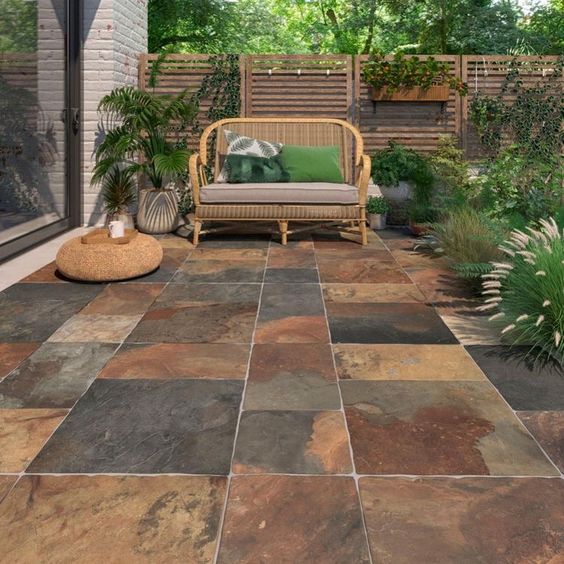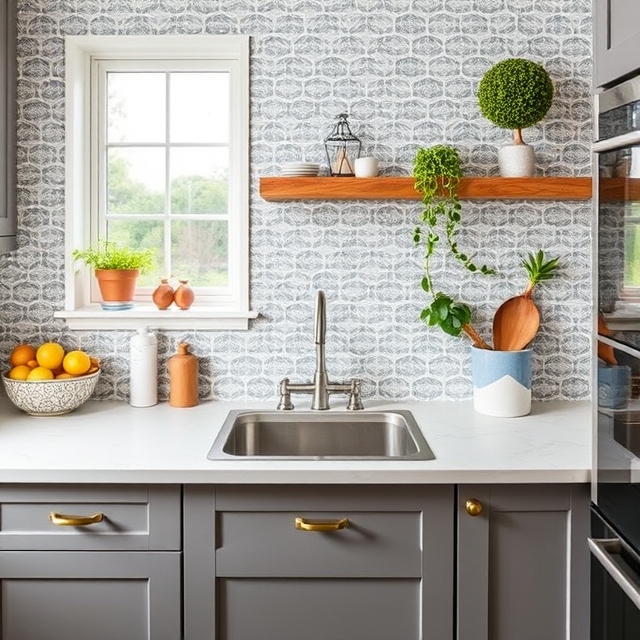The Comprehensive Guide to Porch Tiles: Style, Durability, and Functionality
Porches serve as a beautiful transition between the indoor and outdoor spaces of a home. They offer a perfect spot to relax, entertain, or simply enjoy a morning cup of coffee. To enhance the aesthetic appeal and functionality of your porch, choosing the right tiles is essential. This guide will explore the various types of porch tiles, their benefits, installation tips, maintenance practices, and design ideas to create a stunning outdoor living area.
1. Understanding Porch Tiles
Porch tiles are specially designed to withstand outdoor conditions while adding a touch of style to your home’s exterior. These tiles are available in various materials, sizes, colors, and patterns, allowing homeowners to customize their porches to suit their tastes and needs.
Types of Porch Tiles
- Ceramic Tiles:
- Ceramic tiles are among the most popular options for porches due to their affordability and versatility. They are available in a wide range of colors, patterns, and textures. Ceramic tiles are water-resistant and easy to clean, making them a practical choice for outdoor spaces.
- Porcelain Tiles:
- Porcelain tiles are denser and more durable than ceramic tiles. They have a low water absorption rate, making them suitable for outdoor use, especially in regions with fluctuating temperatures. Porcelain tiles can mimic the appearance of natural stone or wood, providing an upscale look to your porch.
- Natural Stone Tiles:
- Natural stone tiles, such as slate, granite, or travertine, offer a timeless and luxurious aesthetic. Each stone has unique textures and colors, adding character to your porch. However, they require more maintenance than ceramic or porcelain tiles, including sealing to prevent staining and water damage.
- Vinyl Tiles:
- Vinyl tiles are a budget-friendly option for porches. They are easy to install and come in various designs, including those that mimic natural materials. While not as durable as ceramic or stone, vinyl tiles are resistant to moisture and stains, making them suitable for covered porches.
- Cement Tiles:
- Cement tiles are known for their unique patterns and vibrant colors. They are handcrafted and can add a bold design element to your porch. Cement tiles are durable but require sealing to protect against moisture and staining.
2. Benefits of Porch Tiles
Choosing the right tiles for your porch can bring several advantages:
2.1. Durability
Porch tiles are designed to withstand the elements. They are resistant to fading, cracking, and damage from moisture, ensuring that they last for years with minimal wear.
2.2. Low Maintenance
Many types of porch tiles require little upkeep. For instance, ceramic and porcelain tiles are easy to clean and maintain, while natural stone tiles may need occasional sealing.
2.3. Aesthetic Appeal
Tiles can dramatically enhance the visual appeal of your porch. With a variety of colors, patterns, and textures available, homeowners can create a unique outdoor space that reflects their personal style.
2.4. Slip Resistance
Many porch tiles come with textured surfaces that provide better traction, reducing the risk of slips and falls in wet conditions. This feature is particularly important for safety, especially in areas that receive heavy rainfall.
2.5. Versatility
Porch tiles can be used in various settings, including covered porches, entryways, and patios. Their versatility allows homeowners to create a cohesive look throughout their outdoor spaces.
3. Choosing the Right Porch Tiles
When selecting tiles for your porch, consider several factors to ensure you make the best choice for your needs:
3.1. Climate
The climate in your area plays a significant role in determining the type of tiles you should choose. For regions with heavy rainfall or freezing temperatures, consider porcelain or ceramic tiles with a low water absorption rate to prevent cracking. In warmer climates, natural stone tiles can provide a beautiful, durable option.
3.2. Style
Think about the overall style of your home and outdoor space. If you have a traditional home, natural stone or ceramic tiles with classic patterns may be ideal. For modern homes, sleek porcelain tiles with clean lines or bold cement tiles with graphic patterns can add a contemporary touch.
3.3. Color and Texture
Choose colors that complement your home’s exterior. Light-colored tiles can make a small porch feel larger and brighter, while darker tiles can create a cozy, intimate atmosphere. Additionally, consider the texture of the tiles. Textured tiles provide better traction and can add visual interest.
3.4. Size and Format
The size of the tiles can impact the overall look of your porch. Larger tiles can create a seamless, modern appearance, while smaller tiles can be used to create intricate patterns or mosaics. Consider the scale of your porch when selecting tile sizes.
4. Installation of Porch Tiles
Proper installation is crucial for ensuring the longevity and performance of your porch tiles. Here’s a step-by-step guide to help you through the process:
4.1. Preparation
- Surface Cleaning: Ensure the porch surface is clean, dry, and free from debris. Remove any old flooring or paint that may affect adhesion.
- Leveling: Check that the surface is level. If necessary, use a self-leveling compound to create an even base for the tiles.
4.2. Layout Planning
- Dry Layout: Before applying adhesive, lay out the tiles in the desired pattern. This allows you to visualize the final look and make any necessary adjustments.
- Chalk Lines: Use chalk lines to mark the starting point and ensure that the tiles are aligned correctly.
4.3. Adhesive Application
- Thin-Set Mortar: Use a thin-set mortar suitable for outdoor applications. Apply it to the surface using a notched trowel, ensuring even coverage.
4.4. Tile Placement
- Laying Tiles: Begin placing tiles from the center of the porch, working outward. Press each tile firmly into the adhesive and use spacers to maintain consistent grout lines.
4.5. Grouting
- Applying Grout: After the adhesive has cured (typically 24 hours), remove the spacers and apply grout between the tiles. Use a grout float to ensure it fills all gaps.
- Cleaning Excess Grout: After applying the grout, wipe away any excess with a damp sponge before it dries.
4.6. Sealing
- Sealing: If using porous tiles (such as natural stone or cement), apply a sealer after the grout has fully cured to protect against moisture and staining.
5. Maintenance of Porch Tiles
Regular maintenance is essential to keep your porch tiles looking great and prolong their lifespan. Here are some tips for maintaining your porch tiles:
5.1. Routine Cleaning
- Sweeping: Regularly sweep the porch to remove dirt and debris. This prevents scratches and damage to the tile surface.
- Mopping: Use a mild detergent mixed with warm water to mop the tiles regularly. Avoid harsh chemicals that can damage the tiles or grout.
5.2. Deep Cleaning
- Stain Removal: For stubborn stains, consider using a pH-neutral cleaner specifically designed for the type of tile you have. Test any cleaning solution on a small, inconspicuous area first.
- Sealing: Reapply sealer to natural stone tiles as needed, usually every one to three years, depending on usage and exposure to moisture.
5.3. Inspecting and Repairing
- Regular Inspections: Check for cracks, chips, or loose tiles. Addressing these issues promptly can prevent further damage.
- Regrouting: If the grout begins to wear out or discolor, consider regrouting to restore its appearance and protect against moisture infiltration.
6. Design Ideas for Porch Tiles
Porch tiles offer endless design possibilities. Here are some creative ideas to inspire your outdoor space:
6.1. Geometric Patterns
Using tiles of different colors and sizes, you can create striking geometric patterns that add visual interest to your porch. This design works well with cement tiles and can be a statement piece in your outdoor space.
6.2. Borders and Accents
Consider using contrasting tiles to create borders or accent areas on your porch. This can frame the space and provide a polished look. Use natural stone tiles for a rustic border around ceramic tiles for a traditional feel.
6.3. Color Blocking
Using different colors of tiles to create distinct sections on your porch can define spaces for different activities. For example, use one color near seating areas and another near planters or flower beds.
6.4. Mosaic Designs
Incorporate mosaic tiles into your porch design to create beautiful artwork or patterns. This can be done on the floor or walls, adding a personalized touch to your outdoor space.
6.5. Complementing Landscaping
Choose tiles that complement your landscaping. Earthy tones can create a seamless transition from your garden to your porch, while vibrant colors can add energy and excitement to your outdoor area.
7. Conclusion
Porch tiles are an essential element in enhancing the beauty and functionality of outdoor spaces. With a wide variety of materials, styles, and designs available, you can create a personalized and inviting porch that reflects your taste.
Choosing the right tiles involves considering factors such as climate, style, and maintenance needs. Proper installation and regular upkeep are crucial for ensuring your porch tiles look great and last for years. By incorporating creative design ideas and selecting durable materials, you can transform your porch into a stunning outdoor retreat that you and your guests will love. Whether you’re hosting gatherings or enjoying quiet moments, the right porch tiles can make all the difference in creating
Read More:







